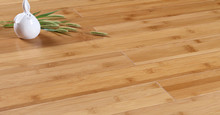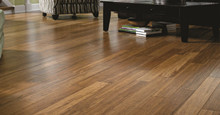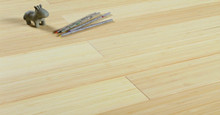Choosing chopsticks may seem simple, but for health-conscious families, especially those with children, the materials and treatments used in the production of chopsticks matter. More consumers are turning to chopsticks made without paint or artificial dyes—products that are made from 100% natural bamboo and processed with care. These chopsticks are not only eco-friendly but also safer, more hygienic, and highly valued in everyday use.
Healthy Eating Starts with Healthy Utensils
Food safety is not limited to what’s on the plate. It includes the utensils used to eat it. Bamboo chopsticks made without any paint or dye reduce the risk of chemical exposure during meals. Painted chopsticks, especially low-cost, mass-produced ones, may contain lead-based pigments or synthetic coatings that can leach into food, especially hot or oily dishes.
When eating with chopsticks that are 100% natural—free from paint, lacquer, or synthetic colorants—there’s no question about what comes into contact with your food. These chopsticks are clean, simple, and safe, especially for children and older adults who may be more sensitive to toxins.
Bamboo‘s Natural Antibacterial Properties
Bamboo has a unique cellular structure that gives it a natural resistance to bacteria. Its fibers contain "bamboo kun," a bio-agent that helps the plant resist pests and microbial growth in nature. Even after harvesting, this property remains active to a degree in untreated bamboo.
When bamboo is left unpainted and undyed, its surface remains breathable and natural. Without synthetic coatings that can trap moisture and food particles, the chopsticks dry faster and resist mold more effectively. This quality is especially important in humid kitchens or bento box environments where moisture can linger.
Thermo Treatment for Long-Lasting Cleanliness
To further enhance bamboo’s natural properties, a thermal treatment process is applied during production. This process involves heating the bamboo at high temperatures—usually between 200°C and 300°C—in a controlled low-oxygen environment. No chemicals are used. The heat treatment serves several purposes:
Removes starch and sugar: These compounds are food sources for bacteria and mold. By removing them, the chopsticks become less likely to support microbial growth.
Reduces moisture content: With less moisture, the bamboo becomes more stable and resistant to warping, splitting, or rotting.
Increases durability: The fibers become denser and stronger, allowing the chopsticks to withstand repeated use and washing.
The result is a chopstick that is clean, safe, and durable—all without the need for paint, varnish, or synthetic preservatives.
Why Japanese Consumers Prefer Natural Bamboo
In Japanese households, the appearance and hygiene of chopsticks are considered just as important as their functionality. Painted or brightly colored chopsticks are often reserved for decorative purposes or seasonal celebrations. For daily meals, many families prefer chopsticks that are simple, natural, and untreated.
The philosophy of “wabi-sabi”—which values simplicity, natural materials, and subtle beauty—also plays a role. 100% natural bamboo chopsticks align with this cultural appreciation for authenticity and minimalism.
Many Japanese parents choose paint-free bamboo chopsticks for their children. The smooth, natural surface is gentle on small mouths, and the lack of artificial coatings means there’s no risk of ingestion of harmful substances. These chopsticks are often used in school lunches and home meals alike.
No Paint, No Dye Means Less Waste and Less Risk
Removing paint and dye from the production process does more than protect the user—it also reduces chemical waste during manufacturing. Factories that produce 100% natural bamboo chopsticks avoid the use of solvents, pigments, and fixatives, which can pollute water and air.
Additionally, the absence of paint and lacquer makes these chopsticks easier to recycle or compost at the end of their life cycle. They return to the earth without leaving behind synthetic residue.
For manufacturers, this also simplifies quality control. There’s less risk of coating irregularities, cracking, or peeling, which are common issues in painted chopsticks. The production line becomes more efficient, and the product more consistent.
A Practical Choice for Homes and Restaurants
Unpainted natural bamboo chopsticks are not just for eco-conscious families—they are also a practical choice for restaurants, cafes, and catering services. Without paint or coatings, the chopsticks can be sterilized more easily. They don’t emit chemical odors when exposed to heat, and they maintain their appearance even after multiple washes.
In Japanese cuisine, where presentation is central and meals are often served in shared dishes, the cleanliness and integrity of chopsticks are essential. Natural bamboo chopsticks are neutral in appearance and flavor, allowing them to blend seamlessly with both traditional and modern table settings.
A Clean Product with a Clean Process
Natural bamboo chopsticks are made through a process that respects both the material and the user. After harvesting, the bamboo is cut, shaped, heat-treated, and polished. There‘s no coating, no painting booth, and no drying room for synthetic finishes. The result is a chopstick that feels smooth in the hand, smells fresh, and stays hygienic over time.
Because there are no added colors, every pair of chopsticks carries the unique grain and hue of the original bamboo. Some may be lighter, others darker, depending on the species and the depth of thermal treatment. Each pair is slightly different, but all are clean, safe, and natural.
A Small Step Toward Safer Meals
Choosing zero-paint, zero-dye, 100% natural bamboo chopsticks is a small but meaningful decision. It supports healthier meals, cleaner manufacturing, and safer tableware for everyone—especially the youngest members of our families. The natural antibacterial strength of bamboo, enhanced by thermal treatment and free from synthetic chemicals, offers a quiet reassurance with every bite.



